Contents
- Early History
- Colonial History
- Local Figures & Organizations
- Parle Tilak Vidyalaya
- Bombay Physical Culture Association
- Post-Independence Era and Contemporary Educational Infrastructure
- Early Childhood Care & Education
- Primary & Secondary Education
- Institutions of Higher Learning
- IIT Bombay
- Sathaye College
- Mulund College of Commerce
- V.G. Vaze College
- University of Mumbai, Kalina Campus
- Tata Institute of Social Sciences
- Prominent Figures & Organizations
- K.J. Somaiya
- NGOs and Community-Based Education Efforts
- Qureshi Nagar Women Welfare Society
- Teach For India
- Graphs
- Enrollment and Dropout Rate
- A. Student Enrollment Numbers
- B. Student Enrollment (Class-Wise)
- C. Student Enrollment (Gender-Wise)
- D. Student Enrollment (By School Management Type)
- E. Drop Out Rate (By Schooling Level)
- F. Drop Out Rate (By Gender)
- Schools
- A. No. of Schools
- B. No. of Schools (Filtered by Gender Mix)
- C. No. of Schools (By School Management Type)
- Teachers
- A. No. of Teachers
- B. No. of Teachers (By School Management Type)
- C. No. of Teachers (Male vs Female)
- D. Education Level of Teachers
- Sources
MUMBAI SUBURBAN
Education
Last updated on 28 July 2025. Help us improve the information on this page by clicking on suggest edits or writing to us.
The educational landscape of Mumbai Suburban district has evolved significantly over the years. Today, the district is home to a diverse range of institutions, from elite private schools such as the Dhirubhai Ambani International School to premier higher education institutes like the Indian Institute of Technology Bombay (IIT Bombay) and boasts a well-developed educational infrastructure, comparable to many other urban regions in India.
While the core Mumbai City district has long been associated with pioneering educational developments and some of the country’s earliest universities, the suburban region’s modern educational infrastructure, particularly for higher education, only began to emerge in the 20th century. What is particularly fascinating, however, is that the district’s educational heritage is believed by some scholars to extend much further back, with indications of a tradition of higher learning in the region nearly 2,000 years ago.
Early History
The early history of education in Mumbai Suburban district can be traced back nearly 2,000 years to the Kanheri caves located in present-day Borivali. Archaeological findings suggest that Kanheri was a prominent center of learning. Kanheri had developed into a significant university center. Inscriptions found at the site tell stories of donations from educators which has led many scholars to believe that it was a prominent center of learning.

Colonial History
In the colonial period, education in the region that is now Mumbai Suburban district developed gradually, shaped by shifting administrative priorities and the work of religious institutions. During Portuguese rule, early efforts focused mainly on religious instruction, particularly within the Catholic community.
One of the earliest known institutions was St. Andrew’s Parish School, established in Bandra in the 1780s by Vicar de Mello. Originally intended to teach catechism to parish children, its curriculum later expanded to include Portuguese and Latin. The school primarily served boys from the local Catholic population and remained active even under British rule, becoming an important part of Bandra’s educational and religious life.

Local Figures & Organizations
While entities from the West played a significant role in shaping the educational landscape of Ahilyanagar, local figures and organizations also emerged as key contributors. Many of them established institutions that continue to shape education in the district today, alongside community-led organizations that have played a lasting role in its development.
Parle Tilak Vidyalaya
The Parle Tilak Vidyalaya Association (PTVA) is one of Mumbai’s well-known educational organisations which is recognised for its emphasis on value-based and character-building education. The association was founded in 1921 by a group of local residents and notable personalities from Vile Parle who were inspired by the ideas and legacy of Lokmanya Bal Gangadhar Tilak.
In June 1921, the association began by opening a Marathi medium school in Vile Parle with just seven students in a single classroom. This modest beginning led to the establishment of Parle Tilak Vidyalaya (Marathi Medium) Primary and Secondary School by 1923.
Bombay Physical Culture Association
The Bombay Physical Culture Association (BPCA) was founded in 1935 by Bapusaheb Mhasker, Namaskaracharya Shri J. K. (Bhausaheb Soman), and Nanasaheb Khadilkar. Its aim was to promote structured physical education and build a culture of fitness.
In the 1960s, the Mumbai Municipal Corporation granted BPCA a permanent lease for land in Wadala, where the organisation developed a dedicated campus with training and sports facilities. In 1978, BPCA formally established the College of Physical Education, which now offers a range of academic programs including Bachelor of Physical Education (BPED), Master of Physical Education (MPED), and Doctor of Philosophy (Ph.D.) in Physical Education. The college also provides training courses for physical education teachers and professional fitness coaches, such as the Certificate Course in Physical Fitness Training (CCPFT) and Certificate Course in Fitness and Coaching Methodology (CCFCM).
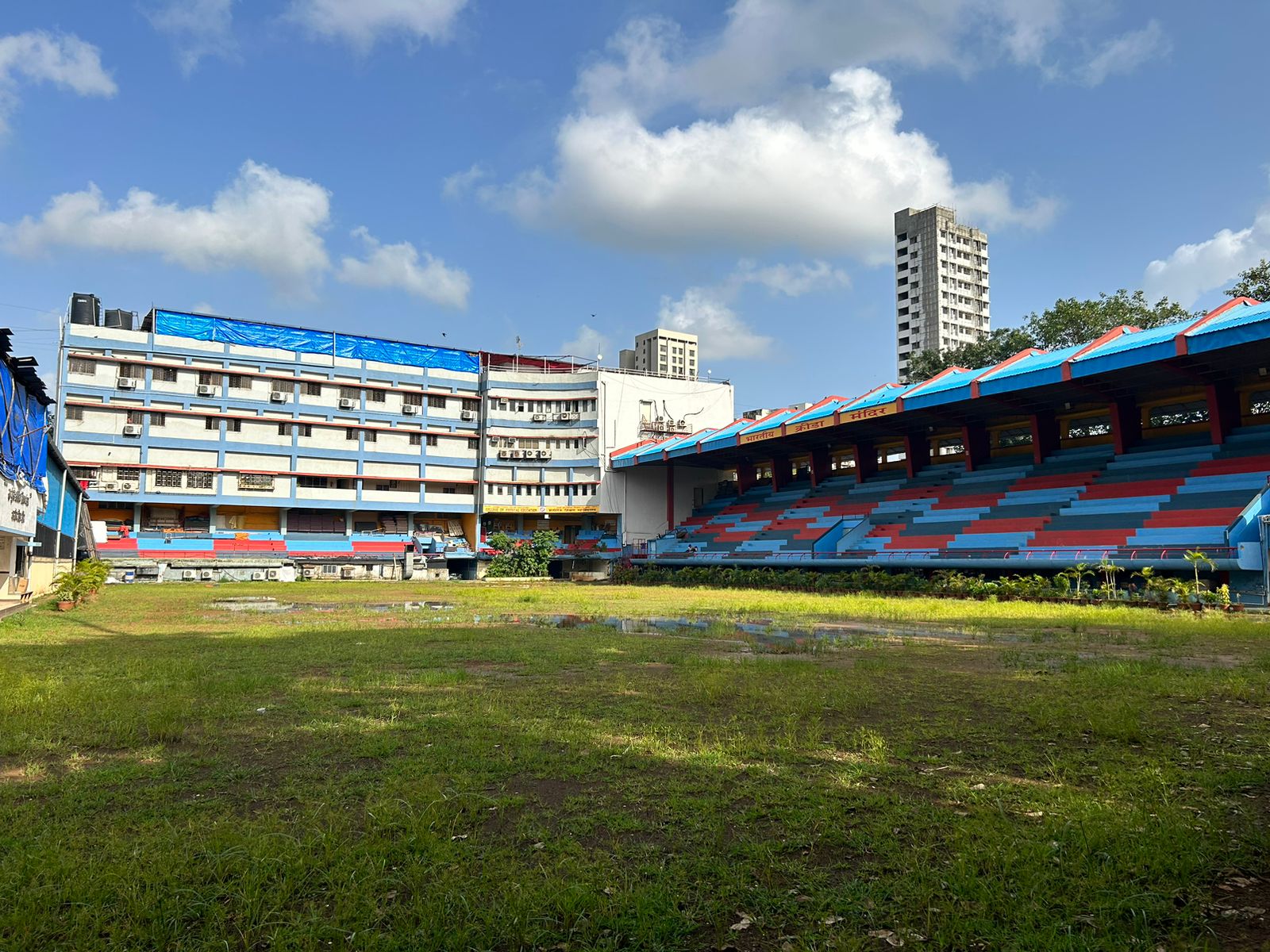
Post-Independence Era and Contemporary Educational Infrastructure
Following India’s independence, the education system in Mumbai Suburban underwent major transformations. The introduction of structured education levels, pre-primary, primary, secondary, and higher education and the implementation of National Education Policies heavily shaped the educational landscape of the district. Over the years, the education sector developed with contributions from both government-funded institutions and private organizations. Additionally, Educational boards were also introduced, each offering distinct curricula and standards, providing students with more choices.
Early Childhood Care & Education
Early childhood education (ECE) in India has evolved notably since independence, moving from relative neglect during colonial rule to being recognised today as an essential stage of learning. Greater awareness of ECE’s role in cognitive and emotional development, along with the push to meet Sustainable Development Goal (SDG) Target 4.2 and changing family needs, has driven this shift. In rural areas, Anganwadis and Balwadis continue to provide community-based early learning and nutrition, while in Mumbai Suburban, preschools, daycares, and Montessori centres have become common.
Primary & Secondary Education
Primary and secondary education in Mumbai Suburban district includes a diverse mix of public and private schools that cater to students from different socio-economic backgrounds. Public schools, managed by the Brihanmumbai Municipal Corporation (BMC) and the state government, primarily follow the Maharashtra State Board curriculum and serve large sections of the population.
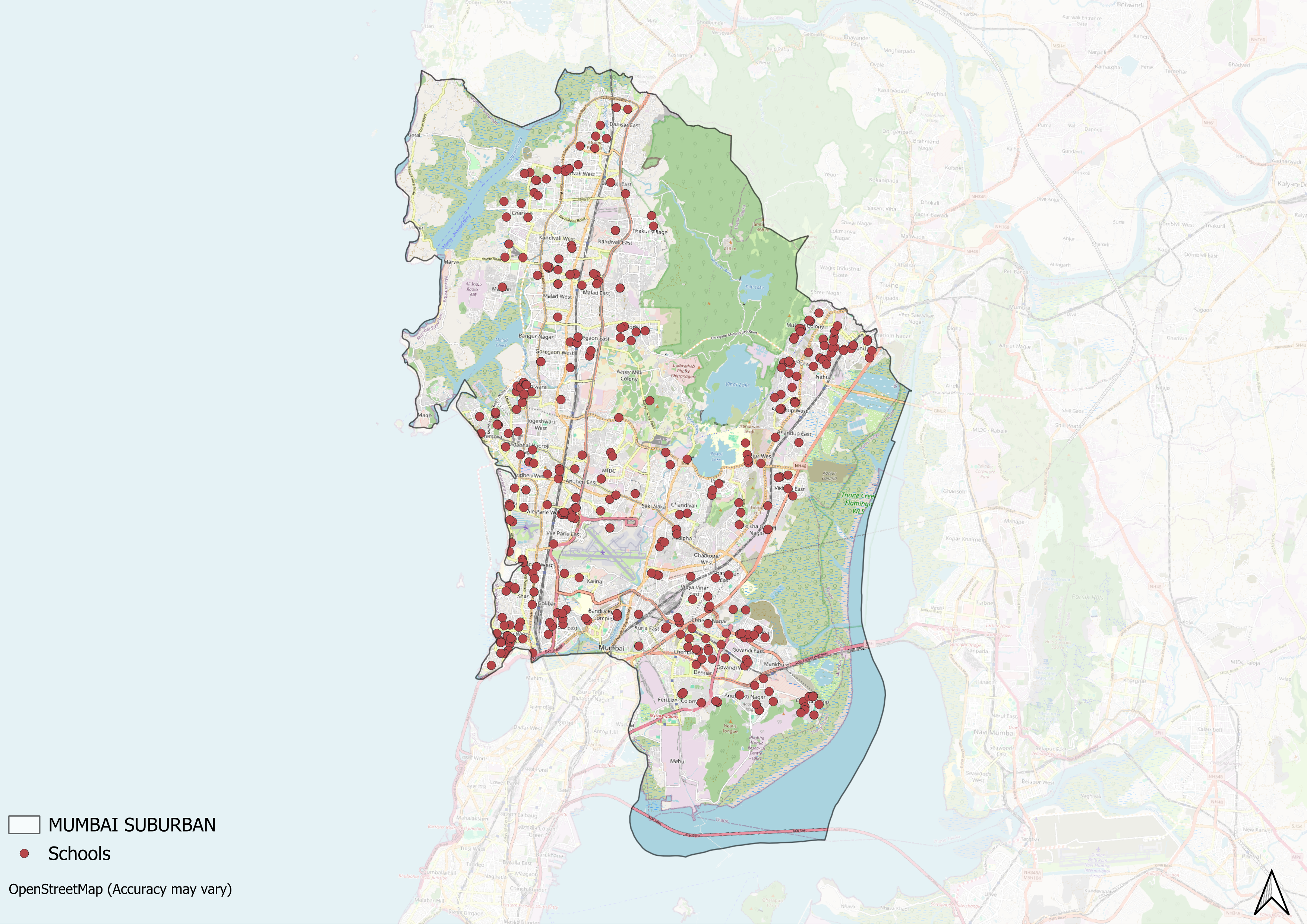
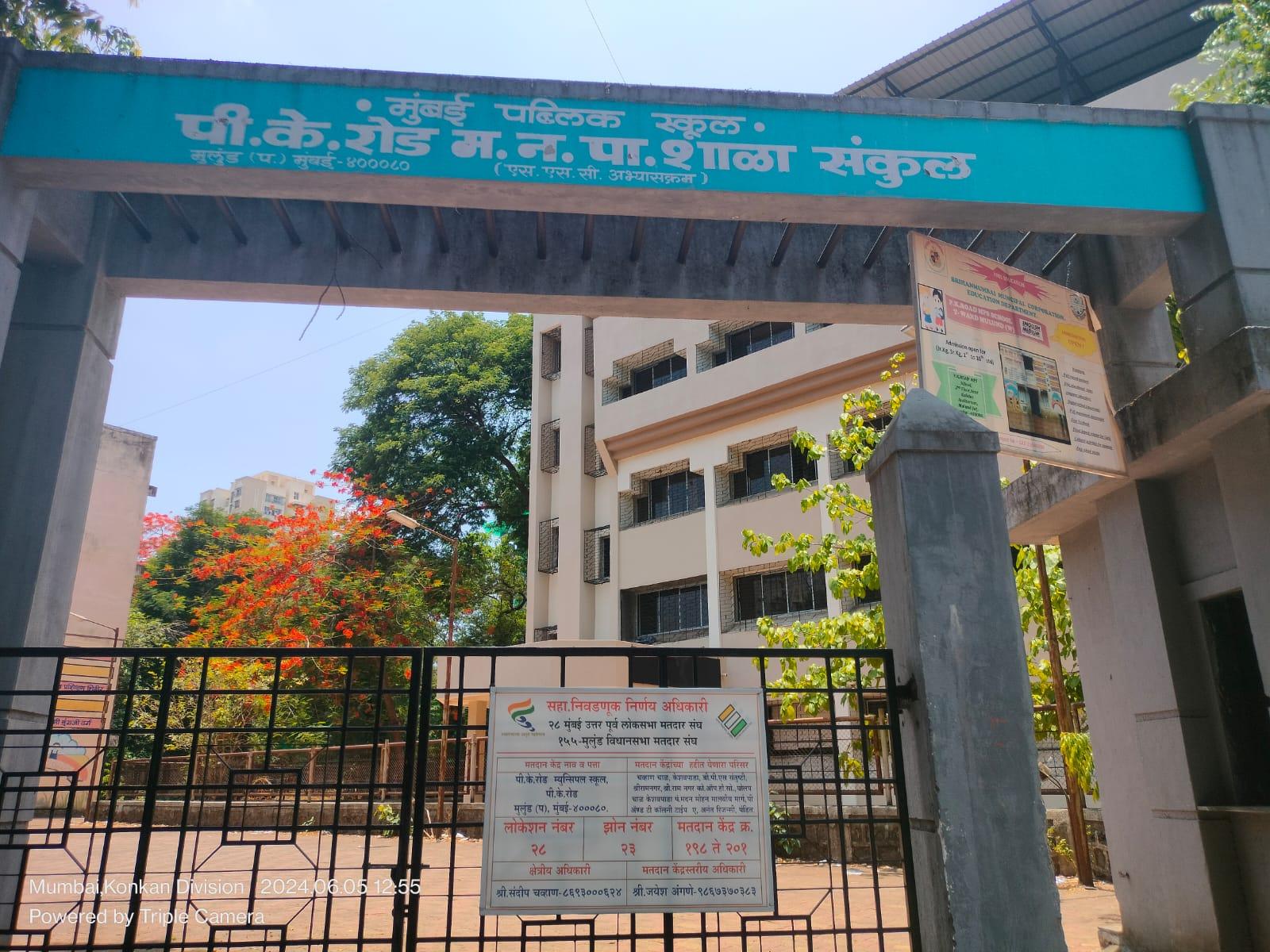
Private schools, which earlier mostly followed the state board syllabus, gradually diversified their offerings to include national boards such as the CBSE and ICSE. By the early 21st century, international programmes like the International Baccalaureate (IB) and IGCSE also gained popularity, especially in the city’s more affluent areas. Schools such as Dhirubhai Ambani International School and Oberoi International School reflect this shift towards global curricula, while schools like Hiranandani Foundation School have expanded to offer multiple boards to provide students with broader academic pathways.
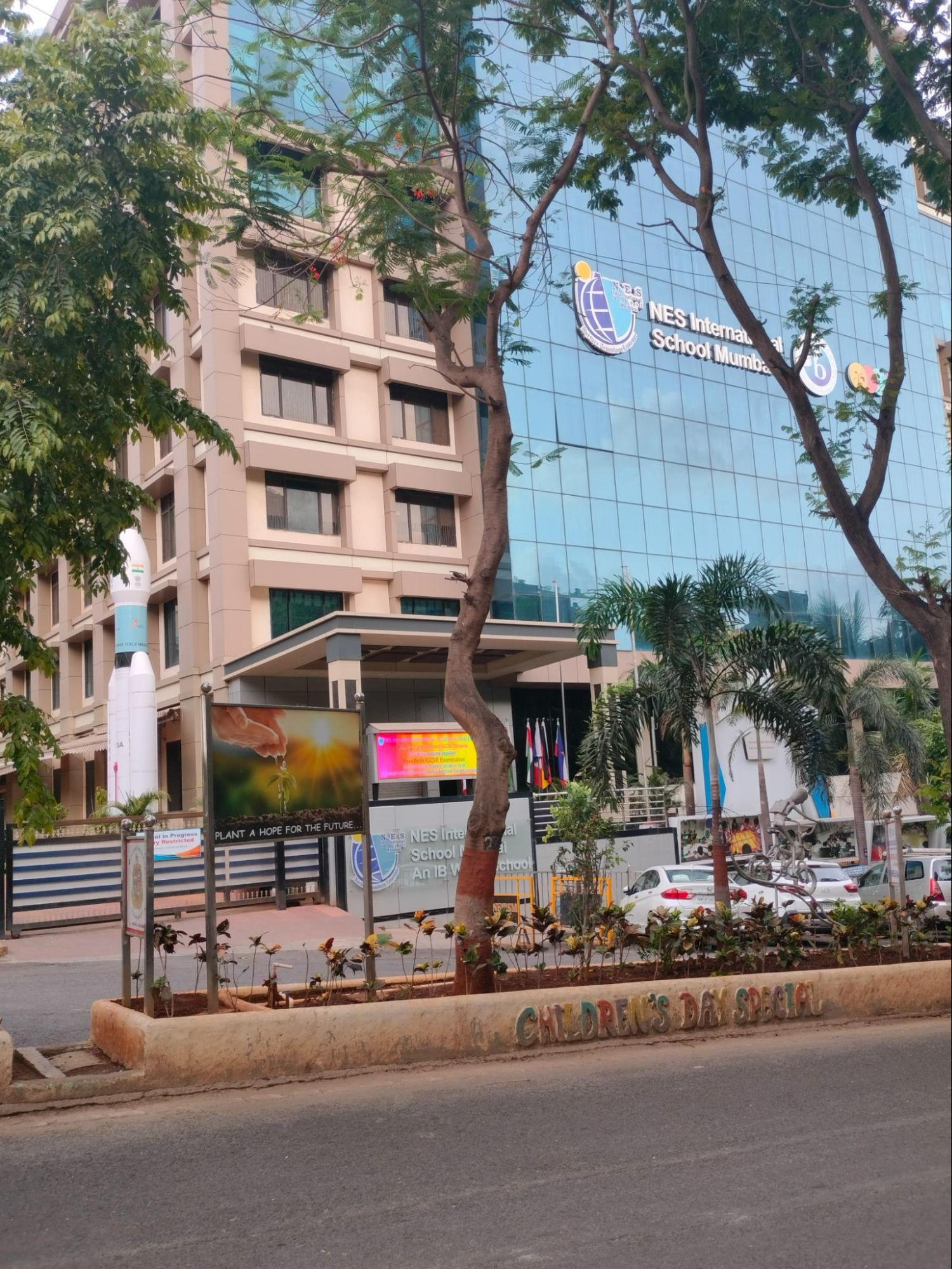
English-medium schools have emerged as the preferred choice for many families, as English proficiency is widely seen as important for employment opportunities and upward social mobility. Historically, however, Mumbai’s suburban schools have reflected the city’s multilingual nature. Alongside Marathi, schools providing instruction in Hindi, Urdu, and Gujarati were established by community trusts and associations across different localities.
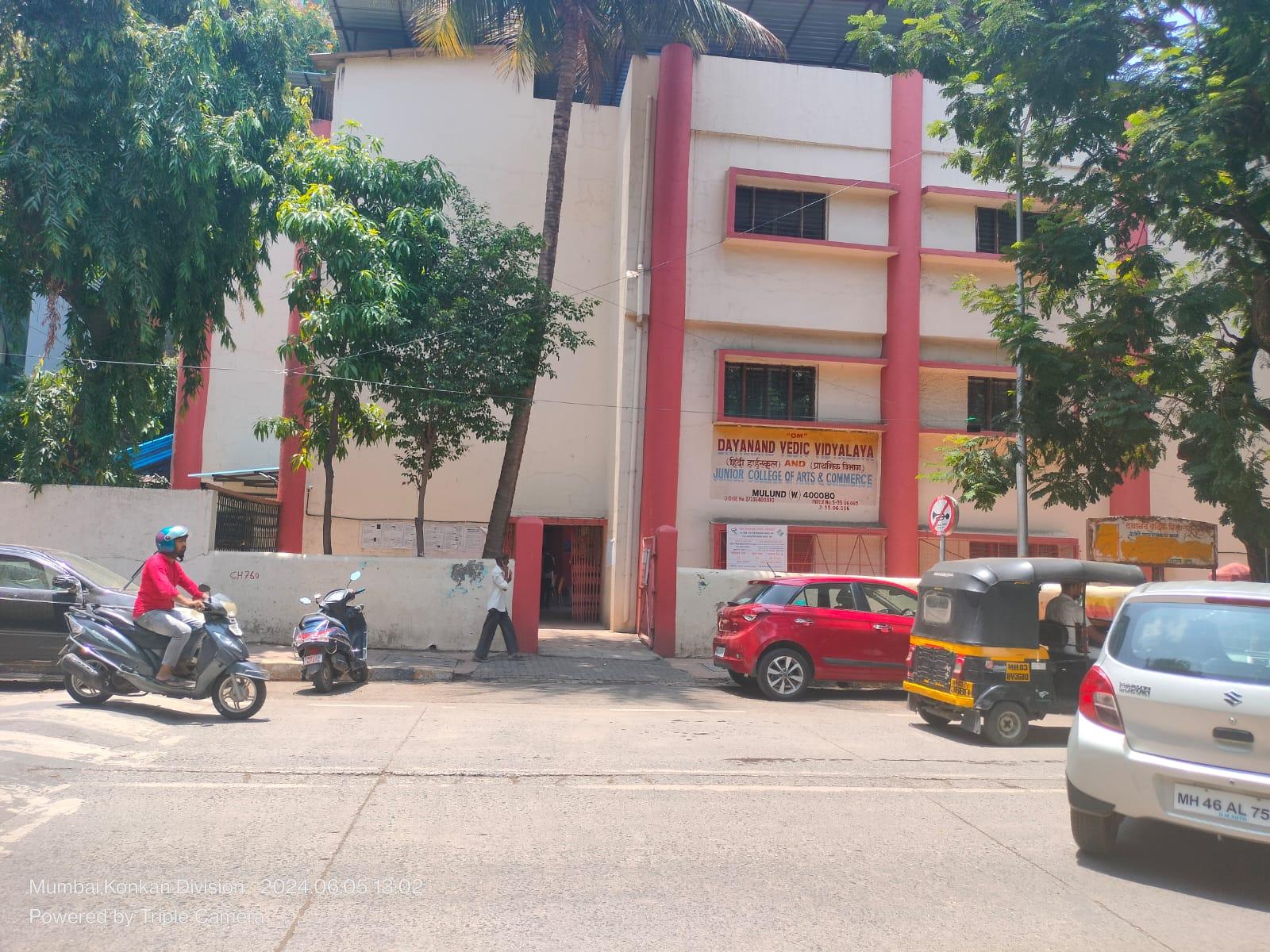
Institutions of Higher Learning
Perhaps one of the most significant changes in Mumbai Suburban’s educational landscape has been the steady development of institutions for higher learning. Before independence, Salsette Island, which constituted much of the Mumbai Suburban district, was mostly perceived to be a peripheral zone to Mumbai City. However, as the City’s population grew and spread into Salsette, the need for local colleges became clear. From the mid-20th century onward, community trusts and local leaders established colleges and professional institutes within these growing residential areas, helping students avoid long commutes to the city and expanding access to higher education.

IIT Bombay
The Indian Institute of Technology Bombay (IIT Bombay) is among India’s most prestigious technical institutions and remains one of the district’s landmark centres for higher education. The idea for the IIT system was originally proposed by Sir Ardeshir Dalal, who believed India’s progress would rely on technological advancement. In 1945, Dr. Humayun Kabir and Sir Jogendra Singh formed a committee under Sir Nalini Ranjan Sarkar, which recommended creating at least four Higher Technical Institutes, inspired by MIT in the United States.

Following this plan, IIT Bombay[3]was established in 1958 with support from UNESCO and the USSR government, on a 200-hectare campus in Powai. Today, IIT Bombay attracts top students and faculty, promotes advanced research, and maintains collaborations across physical sciences, engineering, humanities, social sciences, and management studies.
Sathaye College
Sathaye College, originally known as Parle College, was established in 1959 by the Parle Tilak Vidyalaya Association to expand access to higher education in the Vile Parle area. Over the years, the College has since grown into a significant institution offering a wide range of academic courses.
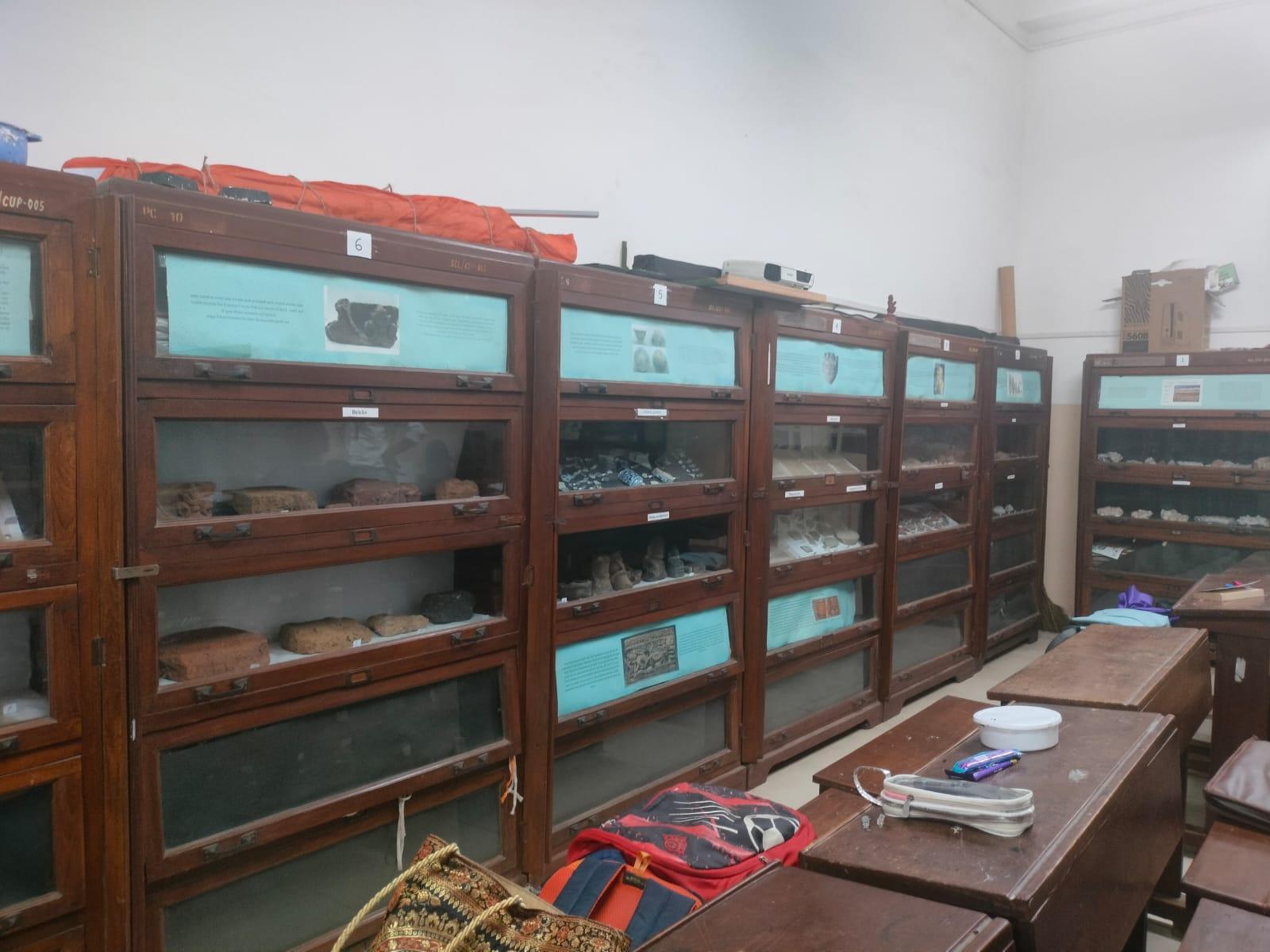
Notably, the college also houses a Department of Indian Culture, which runs a classroom museum showcasing replicas, artefacts, and manuscript fragments related to early Indian history and culture. The collection includes material on the Paleolithic, Mesolithic, and Neolithic ages, as well as exhibits on the Indus Valley and Harappan civilisations. The museum is considered one of the first of its kind in Maharashtra and supports the department’s focus on cultural studies and heritage education.
Mulund College of Commerce
Mulund College of Commerce (MCC) was founded in 1970 by the Parle Tilak Vidyalaya Association, led by Shri Babasaheb Pethe and Shri Baburao Paranjpe. The college provides junior and degree-level education in commerce and related disciplines and continues to serve students from Mulund and surrounding eastern suburbs.

V.G. Vaze College
V.G. Vaze College, commonly known as Kelkar College, is a well-known junior and degree college in Mumbai Suburban district. It was established in 1984 by the Kelkar Education Trust, founded by the late Shri Annasaheb Vaze and his family, with the aim of providing inclusive and high-quality education.

Notably, the college was the first in Maharashtra to receive a NAAC ‘Five Star’ rating during its initial accreditation cycle. It is known for its strong academic record, advanced laboratories, and a dedicated Scientific Research Center that supports faculty research as well as M.Phil. and Ph.D. students. The college typically maintains high cut-offs, with entry requirements for junior college ranging from around 85–90% for Arts and above 90% for Commerce and Science streams.
University of Mumbai, Kalina Campus
The University of Mumbai, formerly the University of Bombay, is one of India’s oldest universities and a major centre for higher education. It was established in 1857 following recommendations from the “Woods Dispatch” of 1854, which laid the foundation for modern university education in India. To manage the rising demand for higher education in the expanding suburbs, a new campus was developed in Kalina, Santacruz, in the late 20th century.
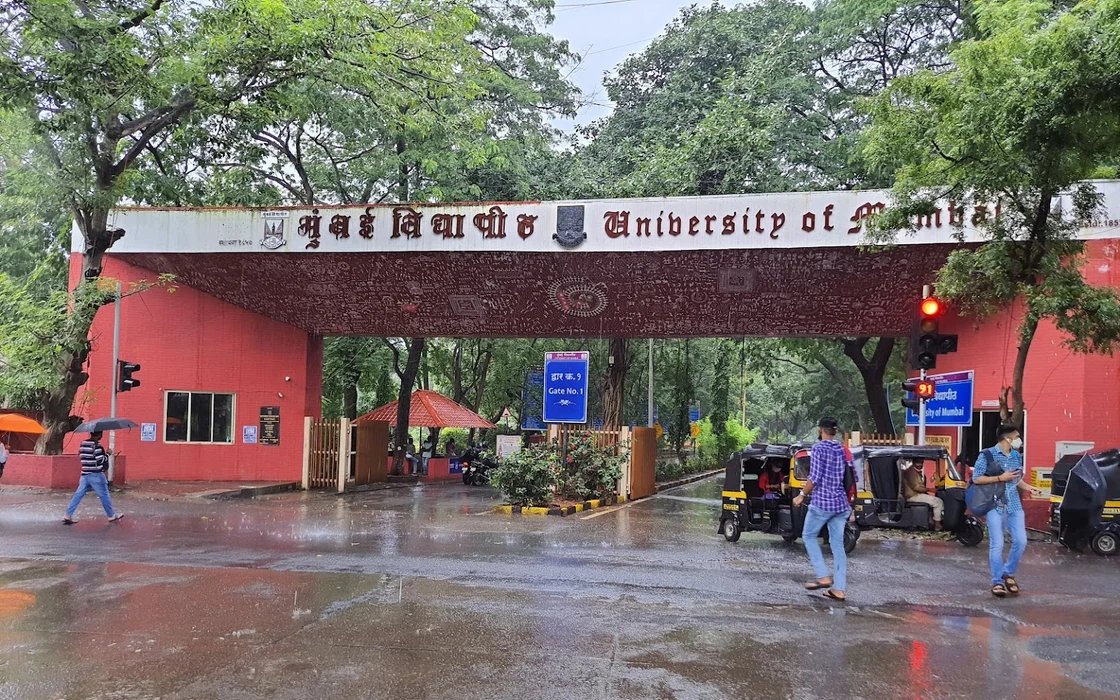
Tata Institute of Social Sciences
The Tata Institute of Social Sciences (TISS) is a Deemed University that was founded in 1936 as the Sir Dorabji Tata Graduate School of Social Work under the Sir Dorabji Tata Trust. Widely regarded as Asia’s first institution dedicated to social work education, it was renamed the Tata Institute of Social Sciences in 1944. Today, TISS offers a wide range of undergraduate, postgraduate, and doctoral programmes in social work, social sciences, public policy, and related fields.
Prominent Figures & Organizations
K.J. Somaiya
Shriman Karamshibhai Jethabhai Somaiya (1902–1990) was an Indian industrialist and philanthropist known for his contributions to the sugar industry and education. Born in Malunjar, Ahilyanagar district, Maharashtra, he began his career in his father’s grocery business before entering the sugar trade. In 1939, he established his own sugar factories in Sakarwadi and Lakshmiwadi, which earned him the title of the “Sugar King of India.”

In 1959, Somaiya founded Somaiya Vidyavihar in Mumbai with the aim of providing quality education and promoting intellectual and social development. Over the years, Somaiya Vidyavihar has developed into one of Mumbai’s largest private educational campuses, hosting schools, colleges, and research centres spread across a 60-acre site in the Vidyavihar area. The campus includes institutions that provide education in arts, science, commerce, engineering, management, and Buddhist studies, among other disciplines.
In 2019, Somaiya Vidyavihar University was established as Mumbai’s first private university under the Maharashtra Self-Financed Universities Act. The university now oversees several colleges that were earlier affiliated with the University of Mumbai.
NGOs and Community-Based Education Efforts
Education has been a key driver of social reform, particularly in addressing inequality and expanding access to learning. While formal institutions provide structured education, many communities continue to face barriers due to poverty, social stigma, or lack of resources. To address these challenges, various organizations in Mumbai Suburban have focused on community-based education initiatives, with each working to tackle specific social challenges present in the district.
Qureshi Nagar Women Welfare Society
The Qureshi Nagar Women Welfare Society was established in 2013 by Reshma Momin to address language barriers faced by students in Kurla’s Kasaiwada locality. This area, historically associated with slaughterhouses and home to many low-income families, has a large number of Urdu-medium schools. Students from these schools often have limited English proficiency, which can make it harder to access higher education or employment, many of which here, require English language skills. To bridge this gap, the organisation runs an English Learning Centre that provides practical language training for local youth to improve their opportunities for further study and employment.
Teach For India
Teach For India (TFI), headquartered in Vikhroli, is a non-profit organisation that works to address educational inequality in India. It was founded in 2009 by Shaheen Mistri and is part of the global Teach For All network, which includes similar organisations in over 60 countries based on the model of Teach For America.
TFI recruits recent graduates and working professionals to serve as full-time teachers in under-resourced schools through a two-year fellowship programme. Fellows work in low-income communities, where they support classroom teaching, strengthen English language skills, and help students build core academic foundations.
Graphs
Enrollment and Dropout Rate
Schools
Teachers
Sources
B. Arunachalam, et al. 1986-87.Maharashtra State Gazetteers: Greater Bombay District.Vol. I, II, III. Gazetteers Department, Govt of Maharashtra. Mumbai.
BPCACPE. “Establishment.” BPCA’s College Of Physical Education.https://bpcacpe.ac.in/establishment/
Design Plus. Heritage Awareness for Caves in MMR: Documentary Film, Phase 1A – Archival Research (Prepared for MMRDA). Mumbai Metropolitan Region Development Authority.
IIT System. “History of IIT System.”https://www.iitsystem.ac.in/history
J. Hyun. 2014.At the lotus feet of the Buddha Venerable Dr. Acharya Buddharakkhita: Life, teachings and works—a Buddhist monk in modern India [Dissertation]. Buddha Vachana Trust, Maha Bodhi Society.https://www.buddhadhyana.org/dammatext/AtThe…
Kelkar Education Trust. Vaze College of Arts, Science & Commerce.https://vazecollege.net/ket/
Krystelle Dsouza. 2024.‘ The Work Isn’t Glamorous, It’s Difficult’: The Woman Who Built ‘Teach for India’ & Impacted Millions. The Better India.https://thebetterindia.com/389861/teach-for-…
Mulund College of Commerce. “College Profile.”https://mccmulund.ac.in/newweb/profile.php
Parle Tilak Vidyalaya Association. “About Us.”https://www.parletilakvidyalayaassociation.c…
S. M. Edwardes, et al. 1909. Gazetteer of the Bombay Presidency: Bombay City and Island. Vol. I, II, III. Bombay.
Santoshee Gulabkali Mishra. 2021. “English Language Pushes Youth in Kasaiwada Up the Economic Ladder.” Citizen Matters.https://citizenmatters.in/kasaiwada/#:~:text…
Somaiya Vidyavihar. “History of Somaiya.” Somaiya Vidyavihar, Mumbai.https://www.somaiya.edu/en/history/#tab-sec
St. Andrew's Church. “St. Andrew’s High School.”https://standrewchurch.in/our-parish/st-andr…
Tata Institute of Social Sciences (TISS). “TISS Overview & Milestones.”.https://www.tiss.edu/about-tiss/overview/#mi…
Vaze College. Institution Website.https://vazecollege.net/ket/
Last updated on 28 July 2025. Help us improve the information on this page by clicking on suggest edits or writing to us.